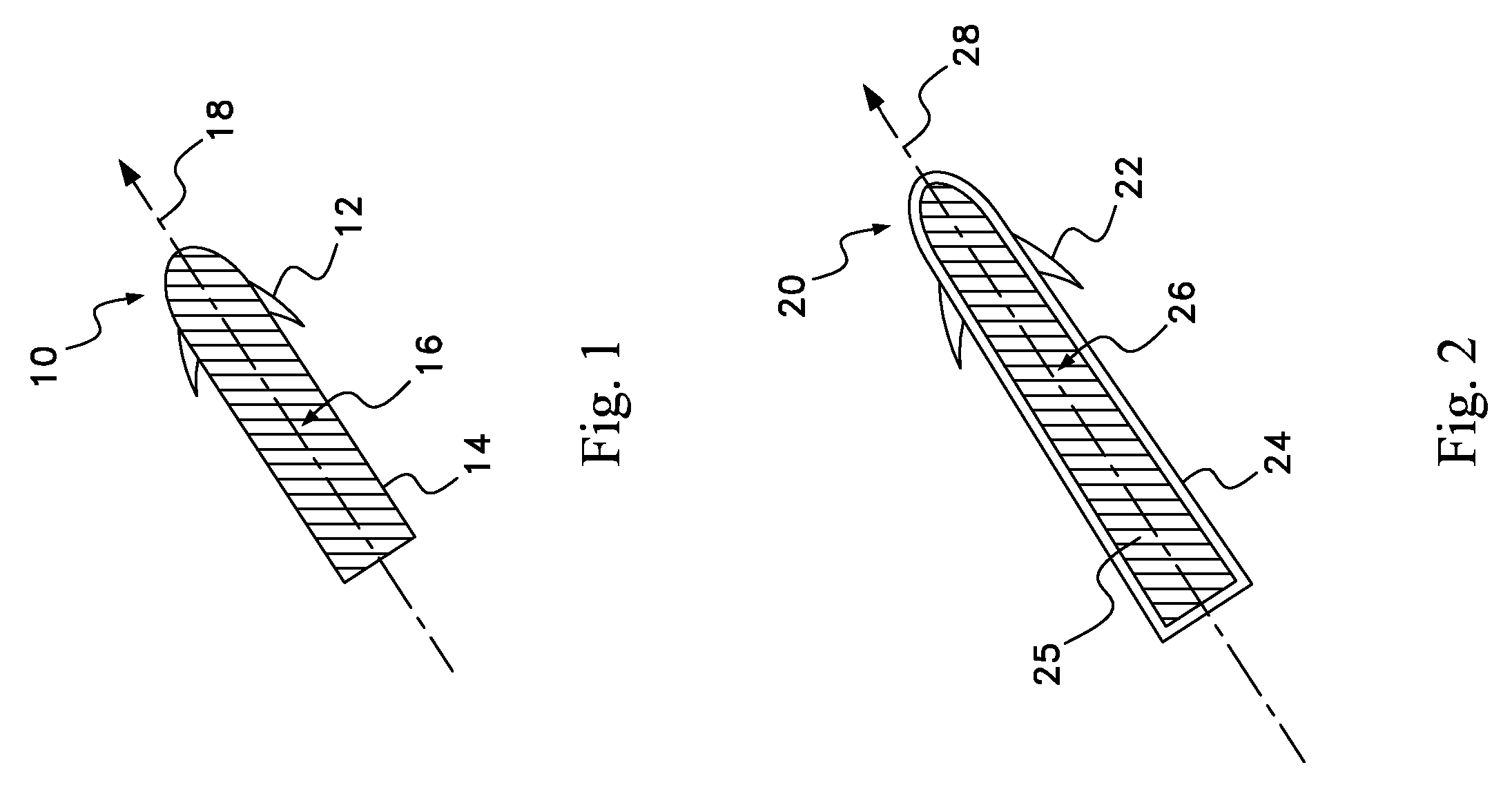Drug depot implant designs and methods of implantation
a technology of drug depot and implant design, which is applied in the direction of prosthesis, peptide/protein ingredients, antibody medical ingredients, etc., can solve the problems of limited amount of agents, insufficient method to serve patients, and degradation of cartilage matrix, so as to facilitate implantation and retention of implants, minimize the effect of implant migration and optimal clinical efficiency
- Summary
- Abstract
- Description
- Claims
- Application Information
AI Technical Summary
Benefits of technology
Problems solved by technology
Method used
Image
Examples
Embodiment Construction
[0061] For the purposes of promoting an understanding of the principles of the invention, reference will now be made to preferred embodiments and specific language will be used to describe the same. It will nevertheless be understood that no limitation of the scope of the invention is thereby intended, such alterations and further modifications of the invention, and such further applications of the principles of the invention as illustrated herein, being contemplated as would normally occur to one skilled in the art to which the invention relates.
[0062] The present invention provides methods, systems and reagents for facilitating implantation of a drug depot implant into a subject comprising implanting an implant depot loaded with a therapeutic agent. The drug depot implants of the present invention may be designed for placement and location within or near the synovial joint, the spinal disc space, the spinal canal or the surrounding soft tissue.
[0063] The present invention also p...
PUM
| Property | Measurement | Unit |
|---|---|---|
| time | aaaaa | aaaaa |
| distance | aaaaa | aaaaa |
| size | aaaaa | aaaaa |
Abstract
Description
Claims
Application Information
 Login to View More
Login to View More - R&D
- Intellectual Property
- Life Sciences
- Materials
- Tech Scout
- Unparalleled Data Quality
- Higher Quality Content
- 60% Fewer Hallucinations
Browse by: Latest US Patents, China's latest patents, Technical Efficacy Thesaurus, Application Domain, Technology Topic, Popular Technical Reports.
© 2025 PatSnap. All rights reserved.Legal|Privacy policy|Modern Slavery Act Transparency Statement|Sitemap|About US| Contact US: help@patsnap.com



